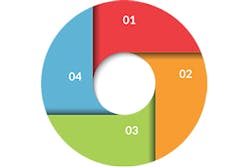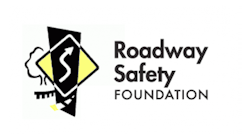Editor’s note: This article first appeared in the March/April 2016 issue of Grading & Excavation Contractor.
Too often, safety managers are perceived as risk-averse, action-stopping do-gooders, says Tom Slavin, a Chicago-based safety consultant. But if a safety manager can create opportunities for project managers and supervisors to communicate safety programs to employees—and get the entire organization involved with safety—then safety adds value by preventing injury and ill health.
Companies operate at three levels of safety performance, says Anthony Veltri, a professor of safety management at Oregon State University. Stage 1 covers about three-quarters of all companies, and includes firms that simply respond to regulations and minimize the cost of safety. Safety is just assigned to the safety manager.
Stage 2 includes 16% of companies surveyed by Veltri, and those firms play catch-up in safety. If company A sees a safety system that works well for company B, then A copies B. Never mind if that safety system does not fit the culture of company A. Stage 3 companies are the best. With them, operating safely creates competitive and strategic value. Safety principles are adopted and practiced by the entire organization.
Slavin advocates the use of a management system to create a safety culture. “A management system provides an organized fashion to get the entire organization involved,” says Slavin. Several such off-the-shelf systems exist, but they don’t all fit construction companies. International Standards Organization (ISO) 14001 is bureaucratic, heavy on documentation, and doesn’t work for many contractors, says Slavin. He calls ISO standards paper tigers. A better one to adopt is American National Standards Institute (ANSI) Z10, a relatively new standard that is more flexible than ISO. “Anybody can do Z10, even the poor performers, because the emphasis is on continuous improvement,” says Slavin.
OSHA VPP, or OSHA’s Voluntary Protection Program, is another management system. Slavin says quite a number of construction companies use it. OSHA has a system whereby they visit your company and certify that you meet their VPP requirements. “OSHA VPP is only for those people that already have good safety records and good programs in place,” says Slavin. “It’s a very powerful program for those people that qualify. But you’re going to see a lot of OSHA because they don’t want to certify you unless they’re pretty sure you’re a good performer, so they’ll make sure you’ve got good programs in place.”
A good management system will have a continuous improvement cycle, says Slavin. Simply put, such a cycle involves “Plan, Do, Check, and Act (Correct or Improve.)” Management leadership involves planning and setting goals. The “Do” part is the implementation—creating your standard programs such as “Lock-Out,” “Tag Out,” “Confined Space,” “Fall Protection,” and so forth.
Next comes the Evaluation and Corrective Action phase. You monitor, measure, and assess your safety performance. You have a system in place for Incident Investigation, and you seriously track Near-Misses and learn from them. You audit your safety program, and you produce an annual (at least) progress report.
“It’s very important that employees understand that there is a safety program and that injury reporting is important,” says Slavin. “A lot of people often get the wrong message, because we don’t spend enough time communicating to employees. And if there’s an injury, and it’s a bad thing, people get called on the carpet. You tend to say, ‘Well, let’s not report that, it’s not a big deal.’ We often look at it as ‘Who is to Blame?’ and ‘Who is to Punish?’ We want people to report near-misses, so we can learn from them. And we want to encourage people to suggest improvements or identify issues.”
Some things need to be documented. For one thing, documentation of training can be a great help in defense against injury claims. “You need some documentation just so you know that you’re improving, so that you can document your opportunities to improve,” says Slavin. “If somebody gives you a suggestion, and you don’t write it down, then you forget it and then that employee is discouraged because nothing ever happened! You want to make sure you learn from your mistakes.”


